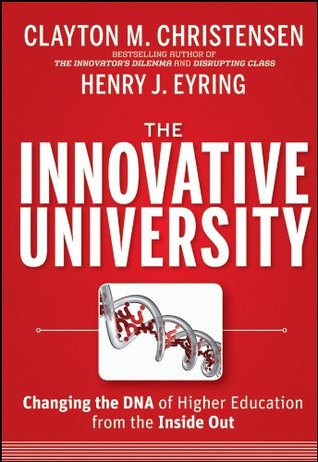More on this book
Kindle Notes & Highlights
Read between
February 7 - April 22, 2018
The main questions are when it will occur and what forces will bring it about. It would be unfortunate if internal delay caused change to
come through external regulation or pressure from newer, n...
This highlight has been truncated due to consecutive passage length restrictions.
The DNA of the University
Ideally, the faculty members, administrators, and alumni who best appreciate the totality of the university's contributions to society will, in the spirit of self-regulation, play a leading role in revitalizing their beloved institutions.26
They have the capacity to determine their own fate and in so doing take the indispensable university to new heights. In performing that critical task, they must understand not
That history is shared, because most universities have emulated a handful of elite American schools that began to assume their modern form a century and a half ago. Prominent among them were Harvard, Yale, Johns Hopkins, Cornell, and MIT. Together, they have evolved to share common institutional traits, a sort of university DNA.27
Much as the identity of a living organism is reflected in its every cell, the identity of a university can be found in the structure of departments and in the relationships among faculty and administrators.
University DNA is not only similar across institutions, it is also highly stable, having evolved over hundreds of years. Replication of the DNA occurs continuously, as each retiring employee or graduating student is replaced by someone screened against the same criteria applied to his or her predecessor. The way things are done is determined not by individual preference alone but by institutional procedure written into the genetic code.28
As a general rule, the university alters itself only in thoughtful response to significant needs and opportunities. Entrepreneurism occurs within fixed bounds; there is rarely revolution of the type so often heralded in business or politics. This steadiness is a major source of universities' value to a fickle, fad-prone society.
For example, requiring universities to admit underprepared students is unlikely to produce a proportional number of new college graduates. It is not in the typical university's genetic makeup to remediate such students, and neither regulation nor economic pressure will be enough, alone, to change that.
In at least one critical respect, organizations are like living organisms: they seek not only to survive, but to grow.
The aversion to shrinking or simplifying is more than just a matter of personal preference; it is driven by institutional decision-making systems, individual rewards, and culture. For example, no risk-averse department chair can think seriously about cutting courses or degree programs; even if such a proposal could be pushed through the curriculum committee, the only reward to the chair would be ostracism by his or her colleagues. For similar reasons, no athletic director can view dropping a popular sport or moving into a less expensive conference as a good career move, nor can a university
...more
A familiar example of the bigger-and-better cycle can be seen in automobiles.
They are obsessed with bigger and better, and all but paralyzed from moving toward simpler and more affordable.
Disrupting Class: How Innovation Will Change the Way the World Learns (New York: McGraw-Hill, 2008), 45–51. For a fuller treatment, see Christensen, Innovator's Dilemma.


